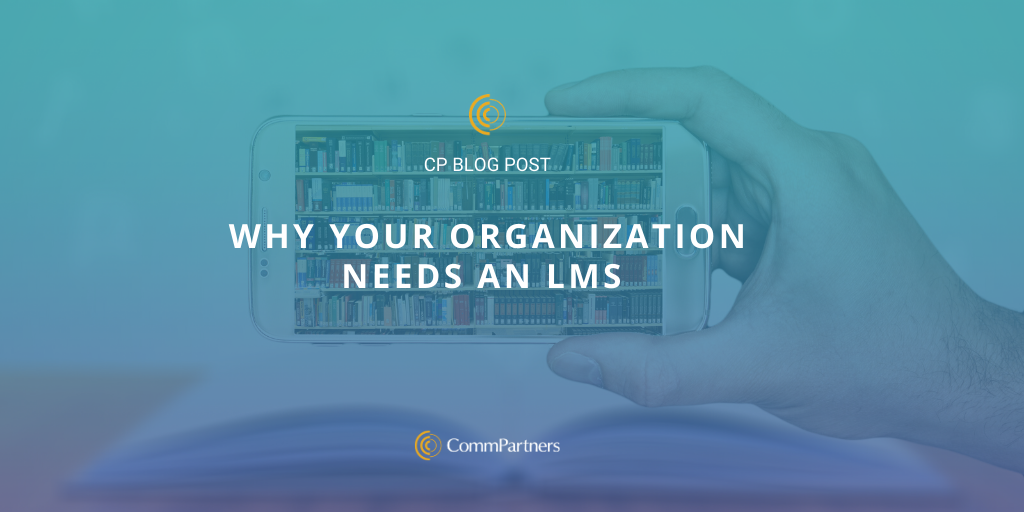
by Julie Ratcliffe | Jul 14, 2020 | Blog
A Learning Management System, or LMS, is software designed for online training, tracking, and reporting that supports content creation and storage for continued learning. An LMS provides your organization or association an opportunity to create a learning community on an eLearning platform. Sound like something that would benefit your membership?
Knowing some advantages of an LMS can help your Development Team determine if an LMS is a right fit for your organization:
-
-
- Create Customized Learning Paths: Create a customized learning journey for each of your members using curated content stored in your LMS. Each pathway can be adjusted as a member’s role within the organization grows and changes.
- Avoid Skill Gaps: Skill gaps are the abilities a new hire might not bring to the table, but the position requires or would benefit from it. Offer training and courses to membership that creates a well-rounded professional and encourages continued learning.
- Doubles as an Event Platform: An LMS can serve as an event platform. Host relevant webinars or a Town Hall once a month. Take it a step further and host your next conference virtually through your LMS.
- Develop an On-Demand Learning Catalog: As your learning community grows, your resources will grow. All the content from previous events can be repurposed and reused. Upload podcasts, relevant media links, anything you think your learners will benefit from. Soon you will have a robust catalog of knowledge within your LMS to draw and learn from at any time.
- Measure Performance: Track and report the performance of members to watch growth, target weak points, and acknowledge achievements.
- Onboard Members: Create learning paths for membership onboarding, so each new member is familiar with organization culture and procedures.
- Certification Opportunities: Allow members to keep up with professional certifications easily.
- Reach Membership Virtually: For organizations with wide-spread membership, an LMS provides a way to reach each learner. An LMS prepares your organization for online learning.
When considering an LMS for your organization, do your research. Understand you are creating a knowledge community for your organization while reaching membership in a new way. To find out more about CommPartners’ LMS, Elevate, click here or contact Meghan Gowen, VP of Client Development at mgowen@commpartners.com.
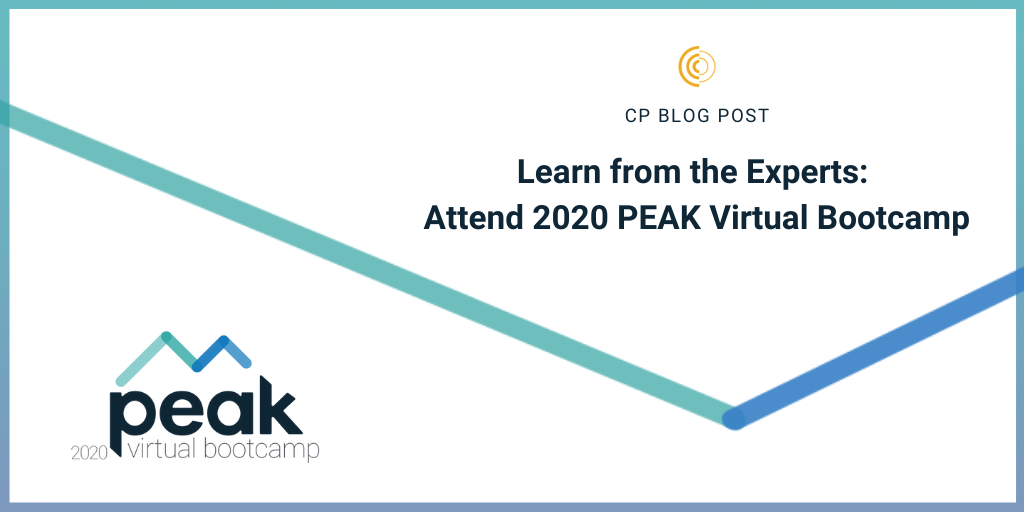
by Julie Ratcliffe | Jun 29, 2020 | Blog
The days of cramming into large convention halls are out of sight, and integrating eLearning into education strategies is the future. Backed by a team of specialists ready to go the extra mile, CommPartners has been helping organizations do just that while creating dynamic virtual events for over 20 years.
Part of our mission at CommPartners, especially now, is to provide our community with useful information and learning tools. To meet that goal, we decided to offer a scaled-back version of our in-person User Conference planned for this summer. We created PEAK 2020 Virtual Bootcamp to help associations and organizations adapt and prepare for the transition to virtual events. During Bootcamp, you will build a Virtual Conference toolkit and contribute to our learning community.
Looking for more reasons to attend?
-
-
- Hear from CommPartners experts on creating a successful virtual event.
- Learn how to transition your in-person conference into a Virtual Conference.
- Understand the benefits of including Virtual Conferences in your education curriculum going forward.
- Hear success stories about organizations that have successfully implemented Virtual Conferences and other virtual events.
- Attend 2020 Virtual PEAK Bootcamp from the comfort of your home.
- Gain ongoing access to Bootcamp resources and past sessions from PEAK conferences.
- Walk away with a Virtual Conference toolkit to use as you create your online learning strategy.
Join CommPartners experts for an afternoon of sessions on July 31, 2020, that will expand your knowledge of virtual events and prepare your organization for the future! Register now!
Visit the PEAK website to learn more.
Were you gearing up for our 2020 PEAK User-Group Conference scheduled for July 30 & 31, 2020, at Nationals Park in Washington, D.C.? We aren’t out of the game yet; we will back at the ballpark for the PEAK User Group Conference in the summer of 2021!
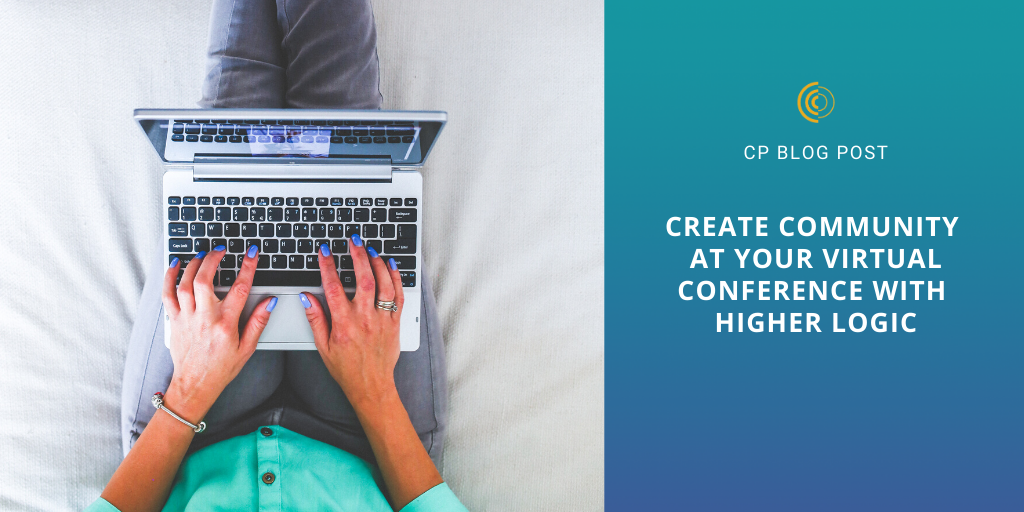
by Julie Ratcliffe | May 27, 2020 | Blog
Learning at conferences can happen in two ways: peer-to-peer and from subject matter experts. Often, what initially attracts us to a conference are the impressive keynote speakers or interesting sessions that contribute to our professional development. Subject matter experts facilitate that kind of learning.
We are also drawn to the social aspects of a conference. The opportunity to network and discuss your field with peers is incredibly valuable. This is peer-to-peer learning. However, something we often hear about at CommPartners is the fear that virtual learners will miss out on peer-to-peer learning, the learning that happens in the hallways, at networking events, or during the meal breaks. While nothing can make up for a face-to-face conversation, it is possible to create a community within your online learning environment.
CommPartners’ LMS, or Learning Management System, Elevate, seamlessly integrates with Higher Logic, an organization specializing in interaction and engagement. Higher Logic allows your Virtual Conference to have a dedicated space for free-flowing conversation between learners that can move beyond the classroom and be as structured or as casual as you want. Here are some ways to facilitate peer-to-peer learning using Higher Logic’s community learning tools:
Session Discussions
- Include a discussion board in each session, adding a new dimension to the speaker’s presentation. This will facilitate a conversation that is specific to that session’s content and won’t get lost in other conversations.
- Speakers can pose thought-provoking questions before a session to get learners thinking before the session begins or will engage learners before the session for more buy-in during the presentation.
Integrating With Your LMS
- LMS’ that have paired community with learning have a more sustainable education system. Education and conversation become cyclical as topics are presented and discussed and then evolve into new ideas for future sessions.
- Include a Higher Logic badge as part of your conference to certify attendees as community builders.
Networking Opportunities
- Include discussion boards on multiple areas of your site to facilitate networking and socializing that extend beyond the classroom. Learners can discuss advances they see their field, new technologies or topics, make connections with peers, etc.
- Open up the discussion; this is an opportunity to ask your members for feedback about your organization or the conference or get them talking about the conference with other members.
Integrating Higher Logic discussion tools creates a dynamic community of conversation and knowledge among your learners. It provides the peer-to-peer learning that many conference attendees search for at a virtual event.
To hear more about Higher Logic and how to make your Virtual Event engaging, join Higher Logic’s Heather McNair for Make Your Virtual Event More Interesting Than What’s Inside the Refrigerator, a free webinar on May 28 at 1 p.m EST. Register here.
Click here for more information
For more information about peer-to-peer learning and how to integrate Higher Logic’s community learning tools, contact marketing@commpartners.com
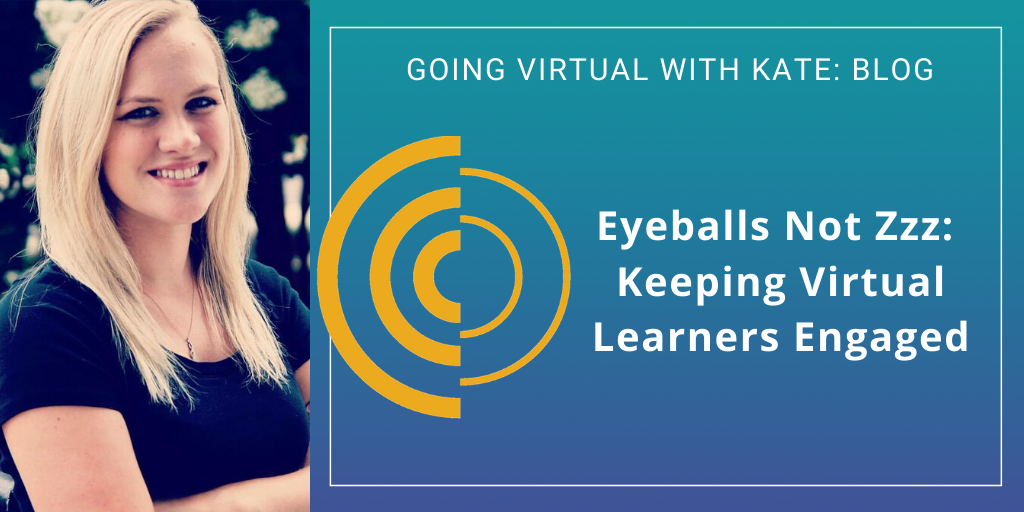
by Julie Ratcliffe | May 14, 2020 | Blog, FaceBook Live
Keeping your learners attention during a Virtual Conference or a Webinar can be a challenge. You had an awesome, 3-day conference planned with all these great activities to make your event interactive, but now you’re forced to go virtual. Attendees who were once going to be bright, shining faces right in front of you, are now faceless figures behind a screen. Are they paying attention to the presenters, or are they scrolling through Instagram? Or are they taking a Buzzfeed quiz to find out which Mamma Mia song fits their personality?
Tracy King, CEO and Chief Learning Strategist of InspirEd, has tips to ensure you’re getting eyes and ears during your virtual eLearning event and not daydreamers.
Session Lengths and Breaks
Even if your learners typically work from home, a Virtual Conference can be a very different learning experience, “consuming content through a screen is fatiguing, and it’s a space we are not used to attending and focusing [on],” says Tracy. Design your sessions with your learners in mind, so your event doesn’t feel like an endurance marathon. When determining session length, consider learning outcomes and the medium, but generally, Virtual Conference sessions should be short about 30-45 minutes. If you plan to go longer, make sure you include interaction (more on that later) and breaks.
Breaks are essential. Presenters and learners need time to stretch, check email, grab a snack/drink, and the ever-necessary bio break. They won’t want to miss a single second of the stellar programming you lined up. To make sure you are giving your learners enough breaks, follow Tracy’s lead:
- 90 minute session = 5 minute break
- Half-day sessions = 15 minute breaks every 90 minutes
Let your learners know when to expect breaks and when exactly they start and stop. Stick to those times. Do not let stragglers derail your conference agenda. If the break is 10 minutes, begin promptly after those 10 minutes are up.
If you’re still unsure of how to design your session, Tracy suggests following the 10×10 Rule: 10 minutes of content and 10 minutes of interaction. The idea is not to be regimented and constantly alternating but for equal parts presentation to equal parts interaction. Speaking of interaction…
Make it Interactive
Don’t shy away from interactivity just because your conference is virtual. Depending on the platform you chose to use for your conference, there may be a host of tools for you to make session hands-on. CommPartners integrates with Zoom, which features tools like a chatbox, whiteboard, Q&A, and polling. These tools can be used as ice breakers, but they should be used to advance learning as well, says Tracy:
- Use the whiteboard in small groups for collaborative projects.
- Poll learners to gauge opinions.
- Facilitate discussion and reflection in the chatbox.
Within CommPartners’ Elevate LMS, or Learning Management System, there are opportunities to make the website interactive for learners:
- Include discussion boards to facilitate conversation, include industry experts as discussion moderators.
- Embed a welcome video introducing your learners to the conference. Make it interactive by giving them a fun task to complete, like asking them to comment where they are joining from on the discussion board.
- If your conference has an Exhibit Hall, utilize chat features so exhibitors and attendees can converse at a booth.
- Create a site scavenger hunt to encourage your learners to explore the whole website, directing them to important features. The winners can receive a prize!
Put the Net in Networking
One aspect of conferences that attendees look forward to the most is the opportunity to network and socialize with other industry professionals. Just because your conference has switched to a virtual platform doesn’t mean the opportunity has to go away. Take advantage of the popular Virtual Happy Hours. Try focusing each Happy Hour around a specific topic, profession, or a previous session so they don’t become overwhelming with too many participants.
Another way to keep the conversation going is to add specific discussion boards or chat rooms to your website specifically dedicated to networking and socializing. Direct your learners to those areas of your website during downtime in the schedule or after learning has taken place. Learners are welcome to take their conversations offline, away from the conference as well.
Going virtual doesn’t mean you need to throw everything you have planned out the window. It is an opportunity to get creative with the tools and the platform you’ve selected. Your learners registered for your conference, ready to consume your quality content, which has not changed. Following these tips will make your learners comfortable, keeping them engaged for the length of the conference.
Click here for more information
For more information about how to engage your learners, contact marketing@commpartners.com. Learn more about education strategy and learning design as well as find Tracy King at inspired-ed.com.
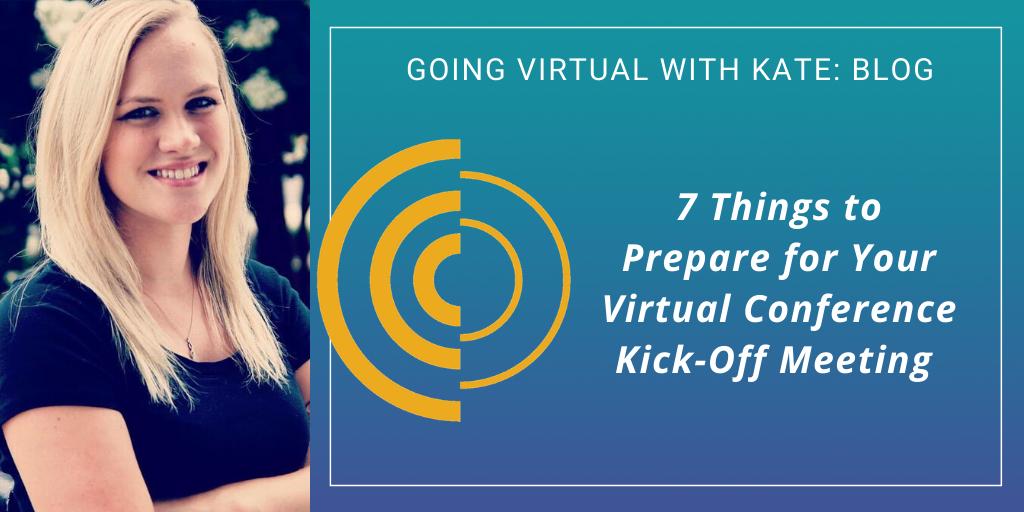
by Julie Ratcliffe | Apr 30, 2020 | Blog, FaceBook Live
One of the first steps in hosting a Virtual Conference with CommPartners is to meet with a Project Manager for a kick-off call. You likely went over some details during the sales call, but now will you dive more in-depth with your producer to take your conference to the next level. To ensure this process is as smooth as possible and production gets started without a hitch, here are a few things you can prepare for this meeting.
What are the dates of your conference?
You have probably established this information by the time you have spoken with the sales team and signed a contract, but if you have reached this point and have not set dates, expect that it will slow things down.
What do you want your conference website to look like?
Elevate clients can create a completely customized conference website. Having an idea of what you’d like your site to look like will speed the creation process up. Here are some things to consider:
- Will you use a sub-domain name of your website or will you use CommPartners’ domain name?
- Will you create an entirely new design theme or base it off your main site?
- What Elevate features and widgets will you include?
- What will your page navigation look like?
You should also be prepared to share files of your color palettes, logos, and any other images associated with your organization that you’ll want to include on your site. CommPartners is happy to help with any questions regarding your conference site environment, but for a truly custom look, arrive at the meeting with a prepared vision or idea.
How do you plan to handle registration?
Decide if your organization is going to process registration internally or if registration is going through the Elevate website. Both are possible, but your producer will need to know at the onset if registration is going through Elevate. The registration process will need to be built-in to the site and time may need to be added to the production timeline.
What does your agenda look like?
At this point, you should have a timeline prepared for your conference. Details about speakers and the sessions are not necessary, but your Project Manager needs to know when each session is happening, including breaks. They need to know you have left enough time for your learners to go from session to session plus take any necessary breaks.
At an in-person conference, learners have a certain amount of time to arrive at their next session. They have time to mingle in the hall or read the literature posted around the conference. There are also plenty of breaks built into the schedule for meals, to get water, go to the bathroom, and check email. Include breaks in your virtual conference agenda, as your virtual learners are doing the same things. They need to take personal breaks, look for the next session on the conference website, or address any technical difficulties they may have. They may also experience fatigue from online learning. Most are not accustomed to learning in this way and need breaks from the screen. Be sure that you include enough breaks in your schedule to accommodate the needs of your learners.
What is your session format?
Once you have you have a clear picture of what your agenda will look like, it is helpful to know what format your sessions will take. You have many options to choose from, will your speakers use just webcams? Slides and audio? A combination? Will some sessions be pre-produced? This can be a more in-depth discussion with your Project Manager at the meeting, but be prepared to tell them your expected attendance for the conference. It will help them choose the right format for your sessions.
Will you include sponsors?
Virtual Conferences offer several monetization options, and sponsorship is one of them. Be ready to let your Project Manager know what’s been sold to sponsors and at what level. Will there be sponsor videos or will your sponsors be introducing sessions? Are you including a Virtual Exhibit Hall?
A Virtual Exhibit Hall is home on your conference site for all the resources a sponsor can distribute to attendees. In each “exhibit booth,” the sponsor can upload PDFs, videos, company descriptions and links, and other assets. The exhibit hall will be open 24/7 – giving sponsors the opportunity for constant exposure.
Be creative when thinking of ways to include sponsors and be sure to prepare a list of participating sponsors for your Project Manager.
Will you include post-conference/session actions?
Finally, decide upfront if attendees are receiving items like credit, certificates, or evaluations after they have completed something at your conference. You then need to determine if they will receive them after each session or after the whole conference has concluded. If there is anything else attendees should receive after a session or the conference, now is the time to alert your Project Manager. These are actions that must be built-in into the site during the early stages.
By considering all of these questions before your first meeting with your Virtual Conference Project Manager, you not only save them time, you also save you and your team time. It will eliminate the amount of back-and-forth that usually occurs when trying to coordinate an event like this and advances the production timeline.
If you have any questions about your first kick-off meeting or would like to speak a sales representative, click here:
Contact Meghan Gowan, VP of Client Development at
mgowen@commpartners.com.






